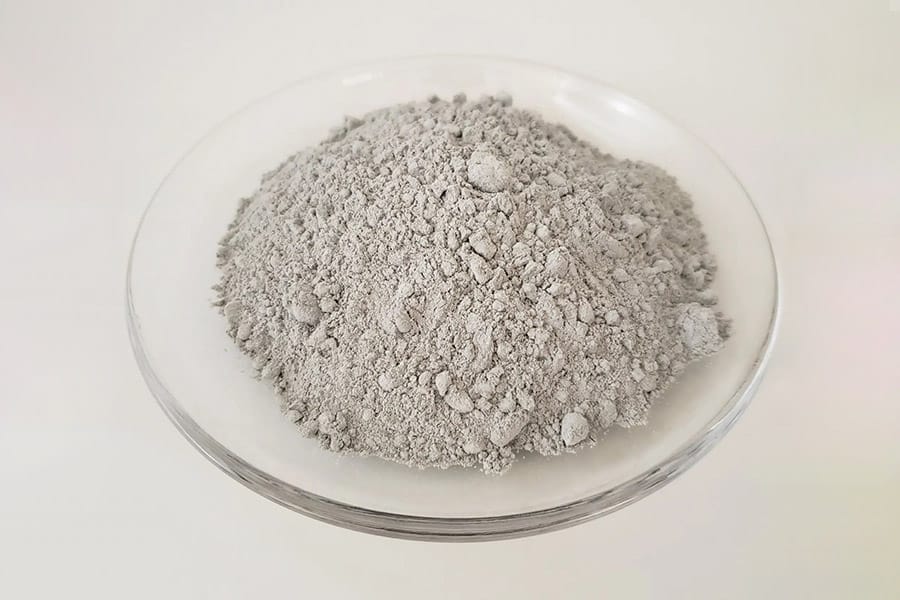シリカフューム, マイクロシリカとも呼ばれます, 石英から金属シリコンを製造する際の副産物として生成される微粒子の粉末です。. アモルファスシリカで構成されています (SiO2) 比表面積が大きい (SSA) までの 250 m2 / g. シリカフュームには、さまざまな用途に役立つ多くの特性があります。, 含む コンクリート, 耐火物, および複合材.
シリカフュームの形成は、四塩化ケイ素が反応したときに発生します。 (SiCl4) 高温の炉にガスが注入される (通常は 1600 ~ 1800°C の温度で). SiCl4 ガスは高温の炉雰囲気と反応して SiO ガスを形成します, その後凝縮してシリカフューム粒子を形成します. シリカフューム粒子のサイズと特性は、さまざまな要因の影響を受けます。, 炉の温度も含めて, 炉雰囲気中の酸素と二酸化炭素の濃度, 他のガス種の存在.
酸素濃度の影響
酸素濃度はシリカフュームの形成に重要な役割を果たします. 酸素レベルが高いとシリコン化合物の酸化が促進されます。, 特定の特性を持つシリカフューム粒子の形成を可能にする. 研究により、酸素濃度が粒子サイズに直接影響することが示されています, 表面積, シリカフュームの化学組成.
粒子サイズと比表面積への影響
一般に、酸素濃度が増加すると、より小さなシリカフューム粒子が生成されます。. 酸素レベルが高いほど、シリコン化合物のより完全な燃焼が促進されます。, 酸化と冷却によりより細かい粒子が得られます. さらに, 酸素濃度の上昇は、シリカフューム粒子の比表面積の増加と相関します。. より高い比表面積により、セメント系におけるシリカフュームのポゾラン反応性が強化されます。, 最終的にコンクリートの強度と耐久性を向上させる.
化学組成への影響
酸素濃度は、シリカフュームの形成中の酸化の程度に影響を与えるため、シリカフュームの化学組成に影響を与えます。. 酸素レベルが高いと、シリコン化合物のアモルファスシリカへの変換が促進されます。, ヒューム中のシリカ含有量の増加. This enhanced silica content contributes to the pozzolanic activity of silica fume, making it an effective supplementary cementitious material in concrete.
The Effect of Carbon Dioxide Concentration
Carbon dioxide concentration is another critical factor in silica fume formation. During the reduction process, carbon dioxide can react with silicon compounds, influencing the characteristics of the resulting silica fume.
粒子サイズと比表面積への影響
Carbon dioxide concentration tends to have a minimal impact on silica fume particle size and specific surface area. Unlike oxygen, carbon dioxide’s influence on particle formation is less pronounced. でも, its role in the formation process requires further investigation to fully understand its effects on silica fume properties.
化学組成への影響
Carbon dioxide concentration can influence the chemical composition of silica fume by potentially incorporating carbon into the silica structure. This could lead to changes in the reactivity and performance of silica fume in concrete applications. でも, the extent of carbon incorporation and its consequences necessitate more comprehensive research.
The Effect of Other Gaseous Species
Aside from oxygen and carbon dioxide, other gaseous species also impact silica fume formation. 特に, water vapor and sulfur dioxide can influence the process and properties of silica fume.
Effect of Water Vapor
Water vapor can impact the formation of silica fume by participating in hydrolysis reactions with silicon compounds. These reactions could affect particle size, 比表面積, and chemical composition. While water vapor’s influence is recognized, its intricate interactions with the formation process warrant further exploration.
Effect of Sulfur Dioxide
Sulfur dioxide presence in the furnace atmosphere can alter the oxidation process of silicon compounds, potentially leading to the formation of crystalline silica instead of amorphous silica. This change could hinder the pozzolanic reactivity of the resulting fume. したがって, controlling sulfur dioxide emissions is crucial to ensure the quality of silica fume.
結論
要約すれば, gas atmospheres significantly influence the formation of silica fume and subsequently affect its properties. Oxygen concentration plays a pivotal role in determining particle size, 比表面積, and chemical composition. Carbon dioxide concentration and other gaseous species also have discernible effects, although more research is needed to comprehensively understand their impact. The complex interplay between these gases during silica fume formation underscores the need for continued investigation to optimize the production process and enhance the material’s performance in concrete applications.





